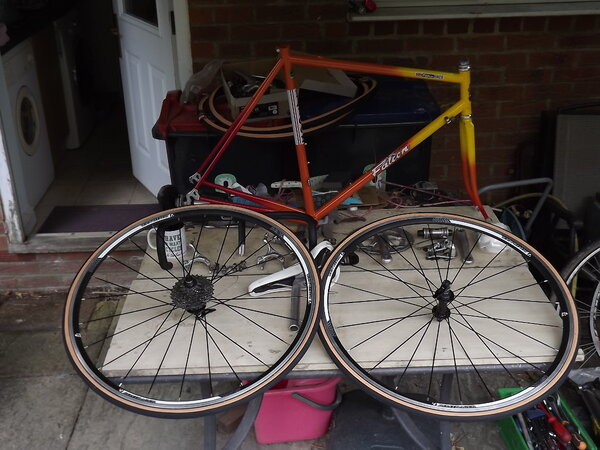Re:
Because of health and safety concerns (we’re all obviously pig poo thick and will probably drink it)
Without wishing to derail the thread, conscience compels me to respond to that, Allen. Bear with me:
I've not painted that many frames. When I do, I use a brush. I reasoned that I would be getting a much higher percentage of the paint on the actual frame that way, without putting the residue into what we have become accustomed to call: "The environment." In retrospect, I think I was decieving myself. My "residue" was brush-cleaner mixed with paint on old newspapers, destined for landfill, as opposed to the spray-painter's residue, much of which passes straight into the atmosphere. But then I guess rattle cans are landfill too, and I guess even spray-gun painters use old rags when cleaning out their spray guns sometimes.. or all the time..
Likewise, I did all my paint-stripping by mechanical, as opposed to chemical methods. 'Mechanical' meaning with scraper and paper in hand. Again I reasoned that I was being "environmentally conscious." But, in a strange black-comedic polarity to the painting itself, this time it was me who was dispersing toxic dust into the atmosphere, whereas the detritus from chemical stripping goes in the landfill.
Anyhow, the point is that the stuff, the 'waste', ends up in "the environment", which means that it ends up in the water, which we drink. So, as an industrial civilisation, collectively we are indeed "pig poo thick", if sustaining the viability of our species by avoiding the ingestion of our own toxic waste products is accepted as being a sign of "intelligence." Or, if you like, maybe it is indeed more intelligent to consciously down a litre of paint stripper at one sitting, and know we are doing it, than to slowly poison both ourselves and the seven
generations that follow us, oblivious to the fact that it is happening, or, maybe even worse, fully aware that it is happening... happening in a systemically ordained fashion not susceptible to change by any exercise of supposed human agency or good will.
Getting (half way) down from my soapbox, my top tip for 'mechanical' strippers: Start at the bottom bracket- especially the area between the
BB shell and the chainstay bridge. Because getting just that clean will take five times as long as doing
all the tubes. If you do the tubes first, you think you've made loads of progress, but you ain't.. you just left the hard bits till last..
And, on lightweight tubes, be extra careful not to take metal from them, especially at the lug shorelines, which are so tenacious of their quota of paint that they can tempt you to resort to aggressive methods. Resist!
The lugs themselves are fair game though. The class of frames that come my way have not had their lugs laboriously refined by an artisan with a file, so I might do some of that work the frame missed when it was first put together forty years ago. That calls for a light touch and an eye for a fair curve, though. We are each blessed/cursed with some skills/sensitivities that came to us so naturally we tend to assume they are more or less universal, but chances are they are not.


